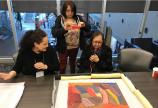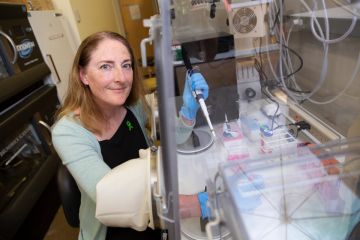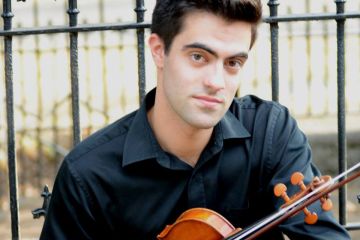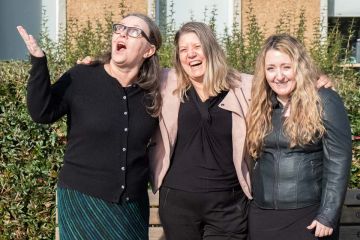Repatriation of residential school art extends across Canada
- Anne MacLaurin
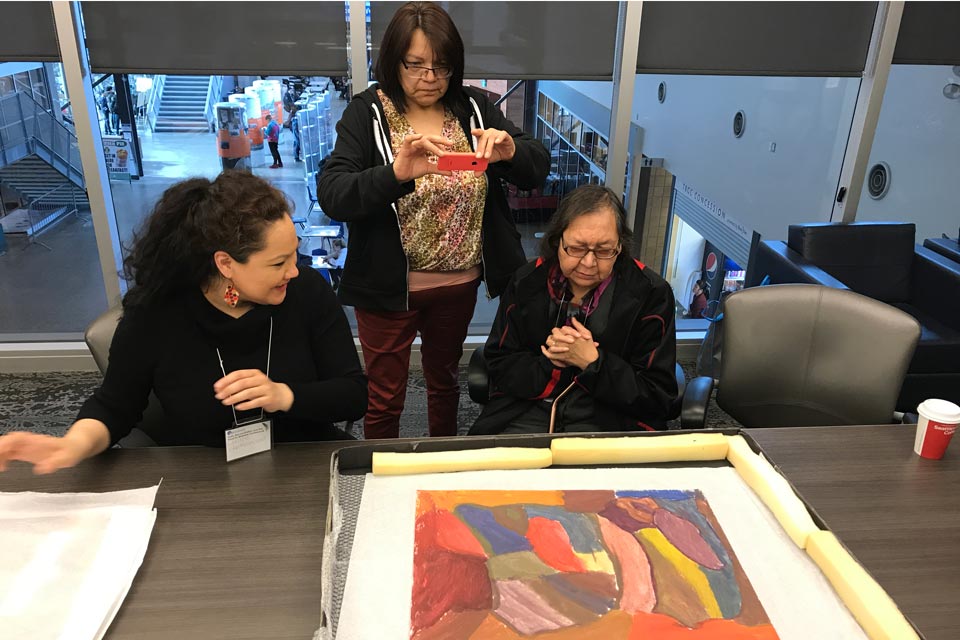
In an ongoing effort toward reconciliation, Andrea Walsh, visual anthropologist and one of UVic’s Engaged Scholars, has been on a decade-long journey to repatriate residential school art work. Her community-based research project began in 2008 with a gift to UVic of 700 children’s paintings created during the years 1958-60 when artist Robert Aller volunteered to teach weekly art classes at the Alberni Indian Residential School.
“The repatriation work began with the Alberni IRS,” says Walsh, “and our collaborative work to build research partnerships has extended across the country to smaller northern institutions in Manitoba and Ontario.”
After securing a SSHRC Insight Development grant in 2012, Walsh was able to set up a long-term national project to locate collections of children’s art from Indian residential and day schools, as well as inform Survivors who created the art, or their communities, about the existence of the artworks. Her team of Elders, Survivors and their families, faculty members, students, and UVic’s Legacy Art Gallery all contributed to locating and returning artwork to survivors of the Alberni Indian Residential School in 2013. Since that time, they have collaborated on five exhibitions of the Alberni IRS paintings alongside art from other collections of residential and day school art as part of their community based curatorial work.
“The Elders’ expertise and close involvement in the work to repatriate the art and then decide if it is put onto public exhibition is what makes this project special,” says Walsh. “Often it is the Elders leading this project, and we work to carry out their vision.”
In August, Walsh collaborated with Dr. Jennie Wastesicoot of the University College of the North in Thompson, Manitoba, along with two former UVic students, Lorilee Wastasecoot (POLI, BA 2017) and Dr. Jennifer Robinson (ANTH PhD 2017) to bring together over 40 Dene and Cree Survivors at a reconciliation gathering in Dauhpin, Manitoba. The gathering they called “Coming Home—Survival and Resiliency Through Art. MacKay Indian Residential School Childhood Memories,” was funded by a SSHRC Institute Connection Grant awarded to Wastesicoot as the lead investigator and Walsh as co-applicant.
“The SSHRC Connection Grant is significant because it demonstrates our collaborative work to build research partnerships and capacity in smaller northern institutions with Indigenous colleagues as leads on the applications as well as working across institutional and community contexts,” says Walsh.
Walsh is working to continue her repatriation work with Indigenous communities in northern Ontario in partnership with another former UVic Student, now an assistant professor, Dr. Celeste Pedri-Spade (ANTH PhD 2016) at Laurentian University.
Photos
In this story
Keywords: art, history, Indigenous, reconciliation
People: Andrea Walsh
Publication: The Ring

